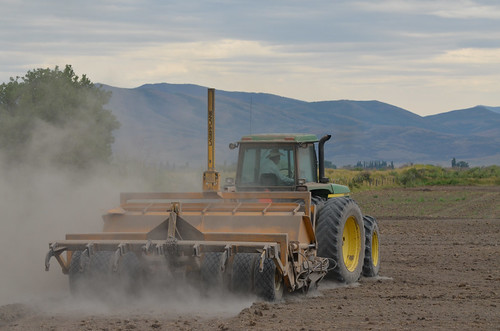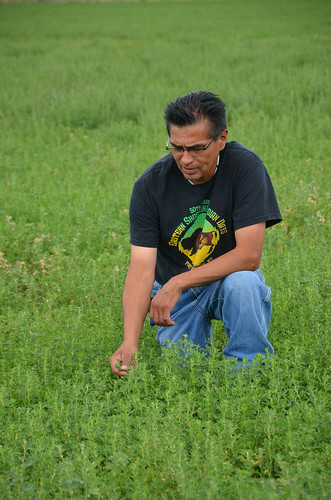
On the Duck Valley Reservation of the Shoshone-Paiute Tribes, alfalfa and cattle are the two major agricultural enterprises of the 289,000-acre reservation near the border of Idaho and Nevada.
Reggie Premo, a member of the Shoshone-Paiute, raises cattle and grows alfalfa on the same land where he grew up. Premo works with USDA’s Natural Resources Conservation Service to use water wisely.
When his father passed away in 2001, he took over the day-to-day ranching operations. He immediately began working to get all of the ranch’s acreage back into production. It’s taken a team effort.
USDA and the University of Nevada Cooperative Extension, where Premo works as a liaison to the community, have been strong partners in helping restore the ranch’s sustainable production potential.
“Today it has really paid off,” Premo said. “I have alfalfa fields in production that were sitting idle for several years.”
The efficient use of irrigation water is important because the area receives only about 12 inches of annual rainfall. Premo sought water conservation advice from his local NRCS office in Elko, Nev. That’s when he learned that the USDA StrikeForce for Rural Growth and Opportunity initiative had technical and financial assistance available for implementing conservation practices that addressed water resource concerns.
The national initiative addresses high-priority funding and technical assistance needs in rural communities in states, including Nevada, with a special emphasis on historically underserved populations.

Through StrikeForce, Premo was able to laser level his land and install water irrigation pipeline on his alfalfa fields, which allows for a more even and efficient distribution of water across a field. Premo has also seen his alfalfa yields increase to three crops a year.
“Water savings projects, like irrigation pipeline and land leveling, enabled Reggie to extend the period of time that he is able to produce a viable crop that can be either commercially sold or used in his own livestock operation,” said Chuck Petersen, NRCS rangeland management specialist. “Being able to utilize a limited amount of water in a short period of time through these more efficient systems has enabled him to really improve his bottom line and make things more sustainable.”
Added Premo: “The operation is starting to sustain itself. The hay sales are kicking in where they are paying a lot of the bills.”
Premo hopes that other Tribal members, including the younger generations, will appreciate the benefits he has reaped on his land from his USDA partnership and explore conservation opportunities and funding for their operations.
“It’s a good thing the Farm Bill programs out there are available to assist our younger people. We have a lot of lands that are sitting idle,” Premo said. “And it is our hope as a Tribe to get these lands back into production and to get our younger generation involved in agriculture. We need to look more toward sustaining our reservation – our people.”

